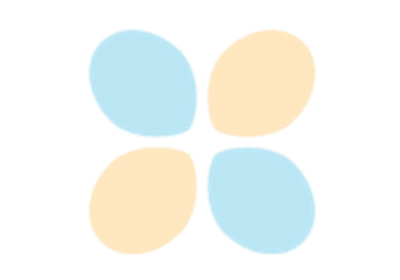gempy.core.data_modules.geometric_data.SurfacePoints¶
-
class
gempy.core.data_modules.geometric_data.SurfacePoints(surfaces: gempy.core.data.Surfaces, coord=None, surface=None)[source]¶ Data child with specific methods to manipulate interface data. It is initialize without arguments to give flexibility to the origin of the data.
- Parameters
surfaces (
Surfaces) – [s0] Class that contains the surfaces of the model and the values of each of them.coord (np.ndarray) – [s1] (numpy.ndarray[float, 3]): XYZ 2D array. Axis 1 is the coordinates while axis 0 is n number of input
surface (list[str]) – [s2] (str, Iterable[str]): list with the surface names for each input point. They must exist in the surfaces object linked to SurfacePoints
-
df¶ Pandas data frame containing the necessary information respect
- Type
pn.core.frame.DataFrames
-
the surface points of the model
Examples using SurfacePoints
Methods
__init__(surfaces[, coord, surface])Initialize self.
add_surface_points(x, y, z, surface[, idx])Add surface points.
del_surface_points(idx)Delete surface points.
init_dependent_properties()Set the defaults values to the columns before gets mapped with the the
Surfacesattribute.map_data_from_series(series, attribute[, idx])Map columns from the
Seriesdata frame to aGeometricDatadata frame.map_data_from_surfaces(surfaces, attribute)Map columns from the
Seriesdata frame to aGeometricDatadata frame.modify_surface_points(idx, **kwargs)Allows modification of the x,y and/or z-coordinates of an interface at specified dataframe index.
read_data(file_path, **kwargs)Read a comma-separated values (csv) file into DataFrame.
read_surface_points(table_source[, debug, …])Read tabular using pandas tools and if inplace set it properly to the surface points object.
Set a default point at the middle of the extent area to be able to start making the model
set_series_categories_from_series(series)set the series categorical columns with the series index of the passed
Seriesset_surface_categories_from_surfaces(surfaces)set the series categorical columns with the series index of the passed
Series.set_surface_points([coord, surface])Set coordinates and surface columns on the df.
sort_table()First we sort the dataframes by the series age.
Add a column in the Dataframes with latex names for each input_data paramenter.
update_series_category()Update the series categorical columns with the series categories of the
Surfacesattribute.-
__init__(surfaces: gempy.core.data.Surfaces, coord=None, surface=None)[source]¶ Initialize self. See help(type(self)) for accurate signature.
-
set_surface_points(coord: Optional[numpy.ndarray] = None, surface: Optional[list] = None)[source]¶ Set coordinates and surface columns on the df.
- Parameters
- Returns
-
add_surface_points(x: Union[float, numpy.ndarray], y: Union[float, numpy.ndarray], z: Union[float, numpy.ndarray], surface: Union[list, numpy.ndarray], idx: Optional[Union[int, list, numpy.ndarray]] = None)[source]¶ Add surface points.
- Parameters
x (float, np.ndarray) – [s0] (float, Iterable[float]): values or list of values for the x coordinate
y (float, np.ndarray) – [s1] (float, Iterable[float]): values or list of values for the y coordinate
z (float, np.ndarray) – [s2] (float, Iterable[float]): values or list of values for the z coordinate
surface (list[str]) – [s3] (str, Iterable[str]): list with the surface names for each input point. They must exist in the surfaces object linked to SurfacePoints
idx (Optional[int, list[int]) – [s4] (int, list, numpy.ndarray): If passed, list of indices where the function will be applied
- Returns
-
del_surface_points(idx: Union[int, list, numpy.ndarray])[source]¶ Delete surface points.
-
modify_surface_points(idx: Union[int, list, numpy.ndarray], **kwargs)[source]¶ Allows modification of the x,y and/or z-coordinates of an interface at specified dataframe index.
- Parameters
idx (int, list, np.ndarray) – [s0] (int, list, numpy.ndarray): If passed, list of indices where the function will be applied
**kwargs –
X: [s1] (float, Iterable[float]): values or list of values for the x coordinate
Y: [s2] (float, Iterable[float]): values or list of values for the y coordinate
Z: [s3] (float, Iterable[float]): values or list of values for the z coordinate
surface: [s4] (str, Iterable[str]): list with the surface names for each input point. They must exist in the surfaces object linked to SurfacePoints
- Returns
-
read_surface_points(table_source, debug=False, inplace=False, kwargs_pandas: Optional[dict] = None, **kwargs)[source]¶ Read tabular using pandas tools and if inplace set it properly to the surface points object.
- Parameters
table_source (str, path object, file-like object or direct pandas data frame) – [s0] Any valid string path is acceptable. The string could be a URL. Valid URL schemes include http, ftp, s3, and file. For file URLs, a host is expected. A local file could be: file://localhost/path/to/table.csv. If you want to pass in a path object, pandas accepts either pathlib.Path or py._path.local.LocalPath. By file-like object, we refer to objects with a read() method, such as a file handler (e.g. via builtin open function) or StringIO
debug (bool) – [s1] of debug is True the method will return the result without modify any related objec
inplace (bool) – [s2] if True, perform operation in-plac
kwargs_pandas – kwargs for the panda function
pn.read_csv()**kwargs –
update_surfaces (bool): If True add to the linked Surfaces object unique surface names read on the csv file
coord_x_name (str): Name of the header on the csv for this attribute, e.g for coord_x. Default X
coord_y_name (str): Name of the header on the csv for this attribute. Default Y.
coord_z_name (str): Name of the header on the csv for this attribute. Default Z.
surface_name (str): Name of the header on the csv for this attribute. Default formation
Returns:
See also
GeometricData.read_data()
-
set_default_surface_points()[source]¶ Set a default point at the middle of the extent area to be able to start making the model

